Hutton-in-the-Forest's glorious gardens: From muddle to lightness and calm
Taking on gardens that have undergone a period of ‘muddle’ is not for the fainthearted, but Non Morris is inspired by the recent reworking of terraces and enclosures around an ancient Cumbrian house.
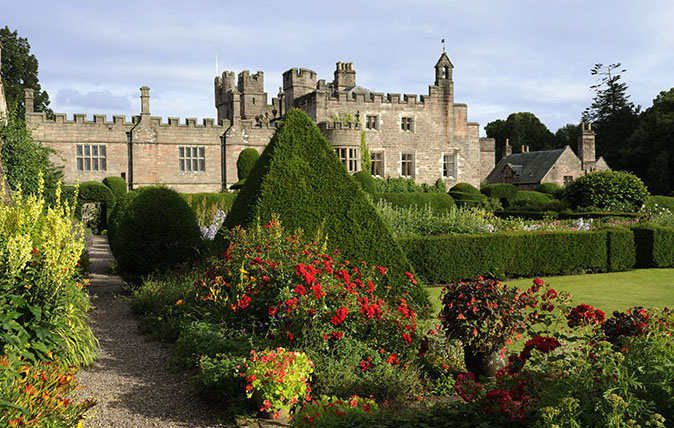

Hutton-in-the-Forest is a many-layered storybook of a country house, almost completely surrounded by ancient Cumbrian woodland.
There is an apron of elegant parkland to the front that leads the eye from the imposing crenellated towers to the ruggedness of the Pennines beyond, but what takes you by surprise is that, apart from the cool ivory sandstone of the neatly Classical east elevation, the house is distinctly pink.
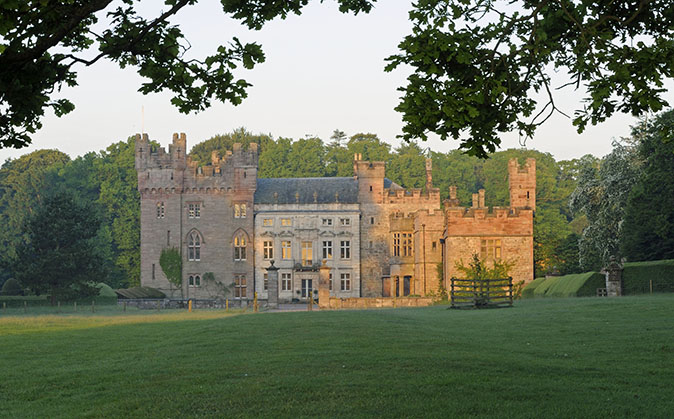
Bathed in this quiet glow of pink-grey sandstone, the visitor starts to get to grips with Hutton’s contrasting architectural elements, from the mid-14th-century pele tower built by the de Hoton family (a defence against the threat of attacking Scots) to the dramatic, staggered 1820s turrets of the south-east tower designed by Anthony Salvin.
Here you can see Candelabra primulas and pheasant’s-eye narcissus next to the path that leads gently down to the Low Garden. Yew topiary and the pele tower behind:
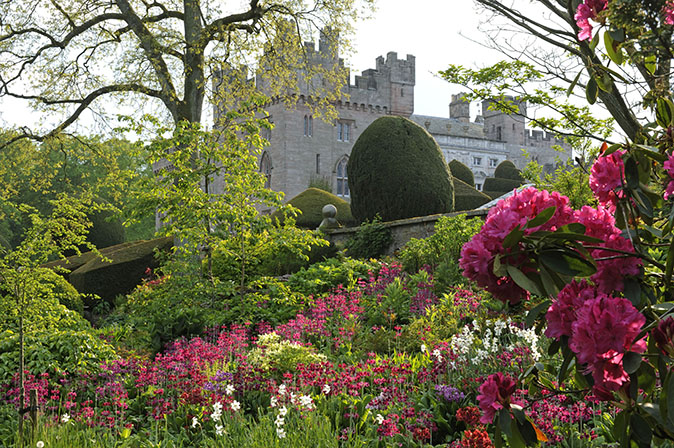
Hutton has been owned by the Vane and Fletcher families for more than 400 years and is home to Lord Inglewood, his wife, Cressida, and their three grown-up children.
As soon as you start to explore the grounds, it is clear that this is an intimate and personal garden, one that that has moved thoughtfully forwards while celebrating the past.
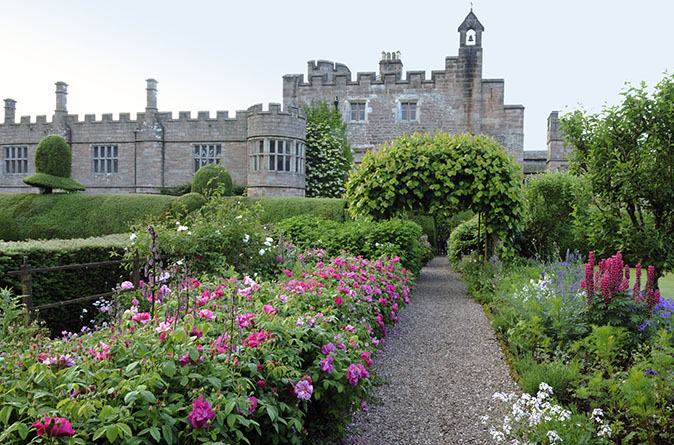
The hands of real gardener-custodians are evident everywhere, from delicate stands of yellow Welsh poppies by a pink-grey sandstone doorway, happily arching boughs of mauve-flowered, fragrant Buddleja alternifolia clothing a soaring stone corner and tempting glimpses of velvety herbaceous planting through narrow openings in the bulging yew hedges.
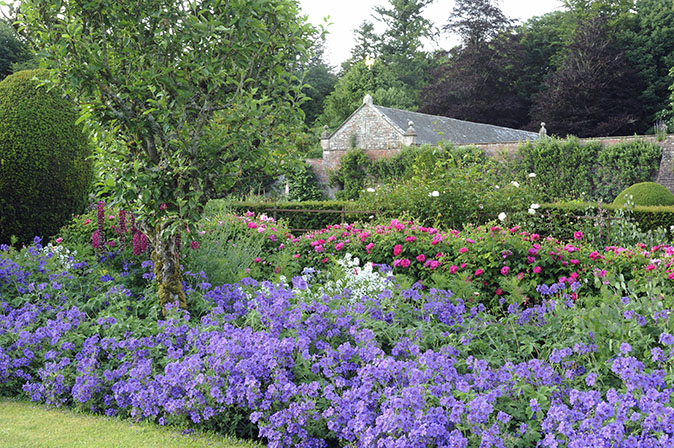
A generous, rosy sandstone terrace built by Richard Inglewood from salvaged stone found on the estate falls away to the Low Garden, soft with the dappled pink and fading greens of grasses and wildflowers, a quiet yet triumphant celebration of space and the views beyond.
Exquisite houses, the beauty of Nature, and how to get the most from your life, straight to your inbox.
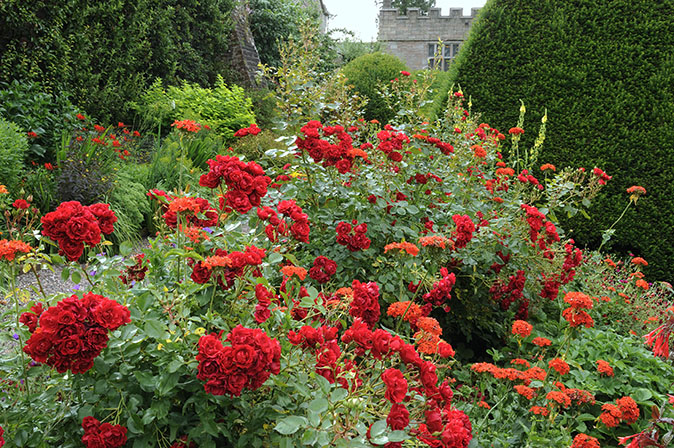
There have been elaborate gardens at Hutton for centuries. A Kip engraving of 1705 shows elegant terraces and immaculate, regimented grounds with an enclosed Dutch garden on the north side of the house.
This became the Walled Garden in the 1730s, when Henry Vane Fletcher built high brick walls along two sides for training fruit trees. The Cascade and Middle Pond, which can be viewed across the wildflower meadows of the Low Garden, were added in the 1750s to harness water from the beck that flows through the garden.
Here is a 1705 engraving of Hutton-in-the-Forest by Jan Kip showing an enclosed Dutch garden (to the North of the house/right of the image) - this is now the Walled Garden:
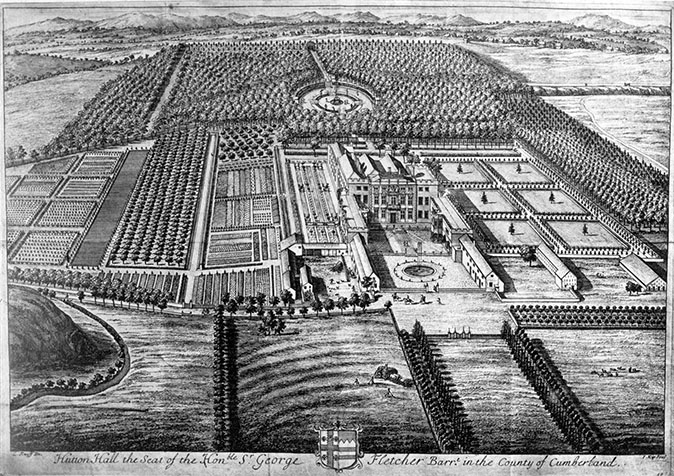
Further remodelling took place at the beginning of the 19th century under William Sawrey Gilpin, along with substantial planting of box and yew both as topiary on the terraces and to complete the two remaining sides of the Walled Garden.
The gardens had been a ‘muddle’ when the current Lord Inglewood took over from his father: ‘He had spent most of his energy preserving the house itself.’ ‘There were pheasant pens and coops and too many different kinds of shrubs coming right up to the South Terrace,’ adds Lady Inglewood.
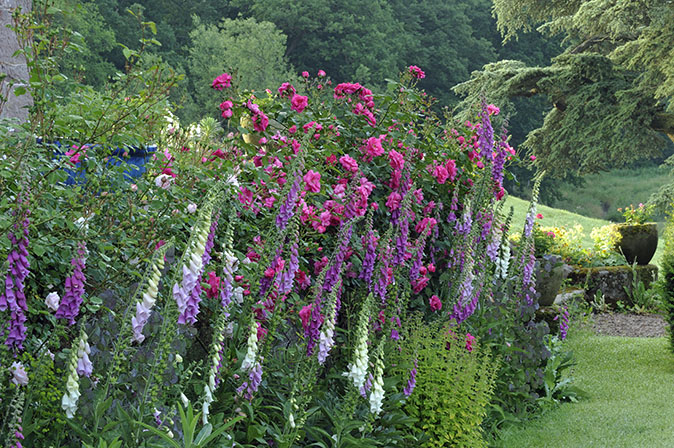
The Low Garden was a rhododendron garden laid out ‘very neat and tidy’ in the 1870s, which had become tangled and overgrown with complex criss-crossing paths and no view through to the Cascade.
The Inglewoods were the perfect pair for the challenge. Lord Inglewood cares deeply about the garden’s structure and history and is already working with the garden historian John Phibbs to investigate the possibility of further 17th-century gardens that might underlie the woodland to the west of the house. ‘We’ve got the bones of something,’ he puts forward excitedly.
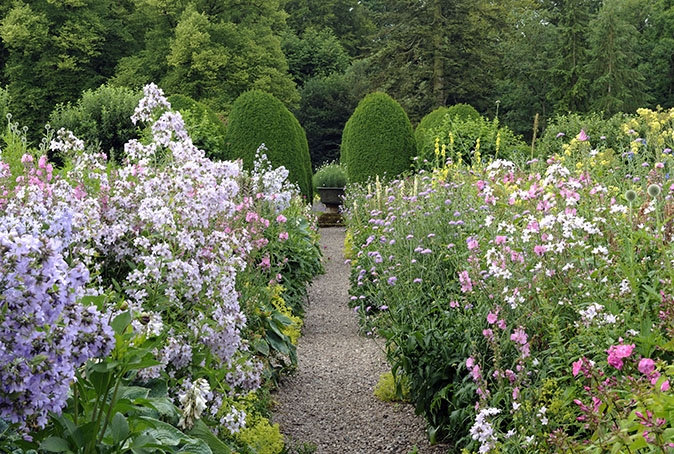
Lady Inglewood, formerly Cressida Pemberton-Pigott, hails from excellent gardening stock. Her forebears include Joseph Paxton, the legendary Chatsworth head gardener and designer of the Crystal Palace, and Dean Hole, one of the Victorian founders of the National Rose Society.
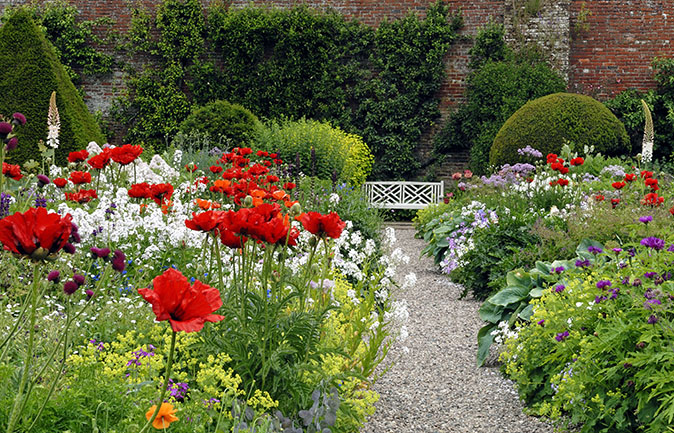
She was also a professional garden photographer for many years and worked on books for the National Trust and in collaboration with Alvilde Lees-Milne and Rosemary Verey.
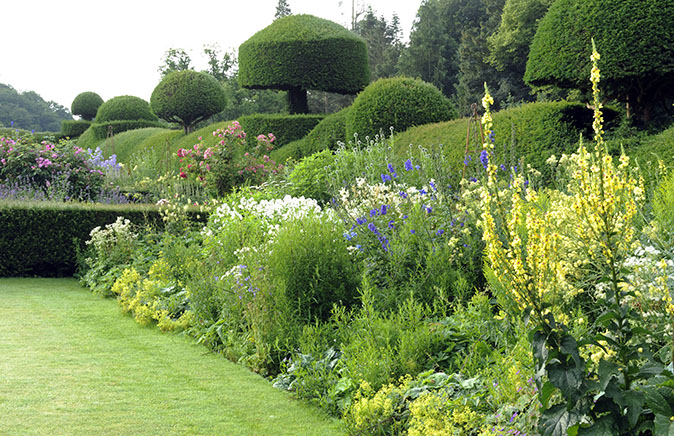
Their main push has been to declutter and simplify the garden and create a sense of comfortable order.
The slopes leading down from the south and west terraces were cleared of unnecessary trees and shrubs and steep steps and superfluous hedges were removed before huge amounts of topsoil were brought in to create a much gentler gradient.
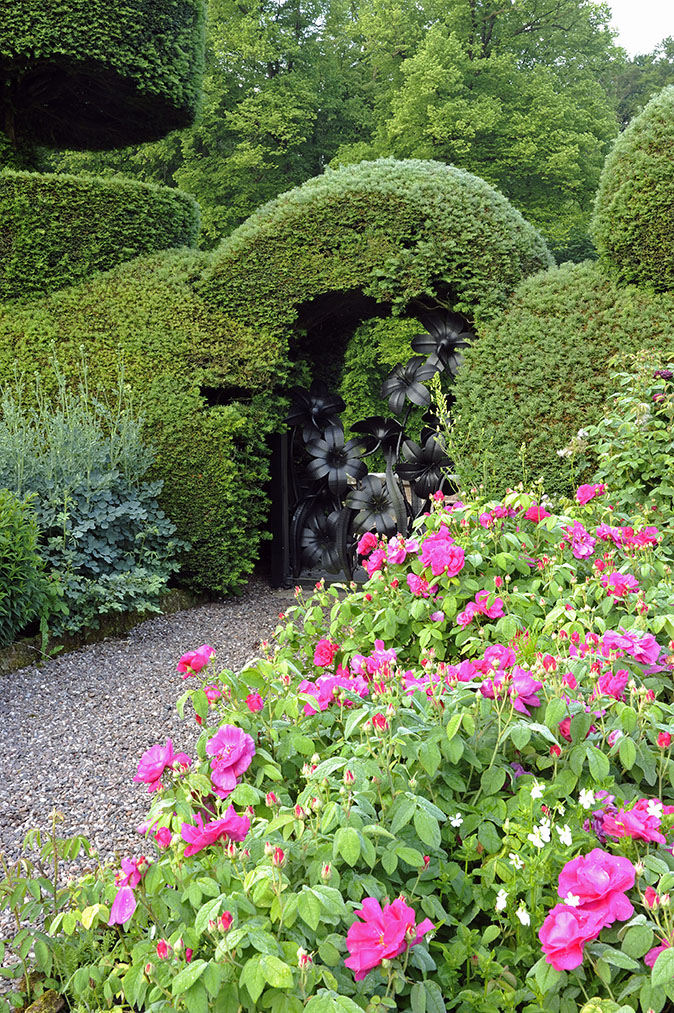
The transformation has been profound.
Only the finest specimen trees remain: a leisurely series of wonderful, slightly leaning yew ‘eggs’, speckled with the brighter green of new growth and two blue-green Atlas cedar trees with a shaggy elegance that provide an excellent halfway point between the confident tightly clipped topiary around the house and the wildflower meadow that now stretches out gently in place of the rhododendrons.
The Rose Borders are one of many highlights:
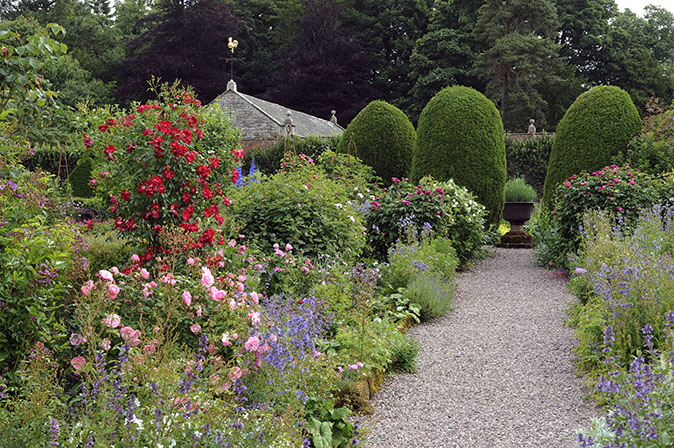
‘It took a year to clear the five-acre Low Garden of rhododendrons and Irish yew and another year to burn up the roots,’ recounts Lady Inglewood. ‘It looked rather like a Paul Nash painting of the First World War.’
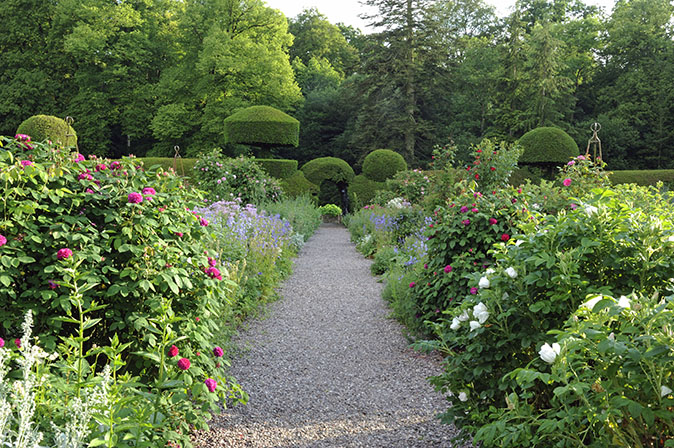
The sundial was moved so that it would be in line with the Middle Pond Cascade and the area sown with seed collected from local wildflower meadows.
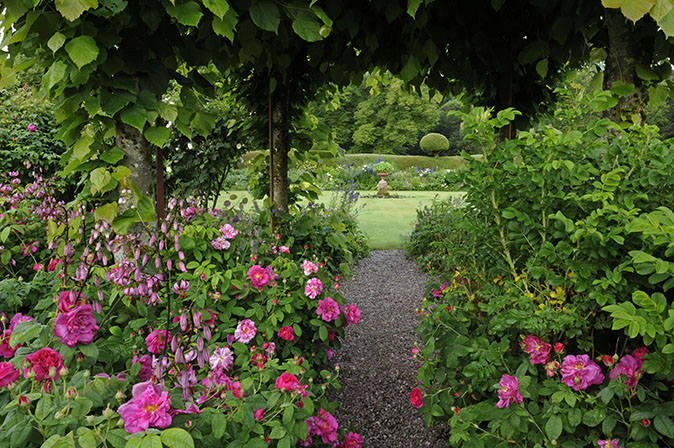
Each year as the meadow rises, Lady Inglewood works out the pattern of mown paths in string with Head Gardener Kevin Caddy and enjoys the chance to create a slightly different dynamic; the most recent has been a quietly maze-like double spiral.
It’s exhilarating to be in the middle of its ordered openness; standing at the centre of a spiral can induce a tremendous feeling of lightness and calm.
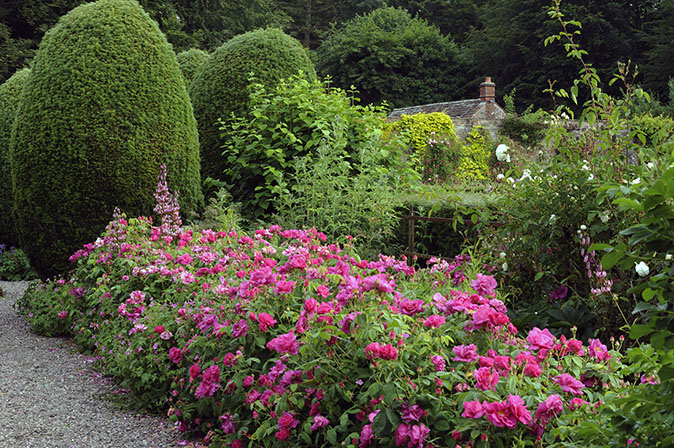
Upon leaving the wildflower meadow, you can choose one of three bridges that lead into the woodland. Here among the trees, the birdsong intensifies and the scent of wild garlic hangs in the air in due season.
If you climb up to the West Terrace, you’re rewarded with a triumphant stretch of bright-pink roses and rocketing foxgloves and then a calmer walk to the Walled Garden along its fine boundary hedge.
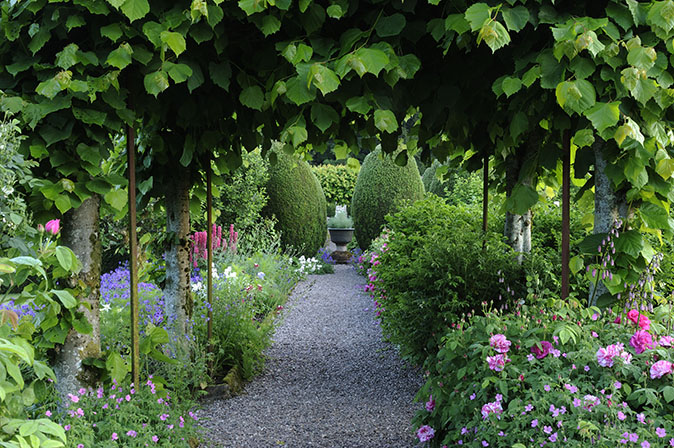
Repeated terracotta urns are filled with Nasturtium Milkmaid, so that its mounding bright green leaves and pale-yellow flowers sing out against the dark, velvety yew.
Entry to the Walled Garden is via one of three handsome black-iron gates made by Scottish artist-blacksmith Adam Booth.
This octagonal lead planter boasts Fuchsia Thalia, Lobelia cardinalis Queen Victoria and Nasturtium Empress of India:
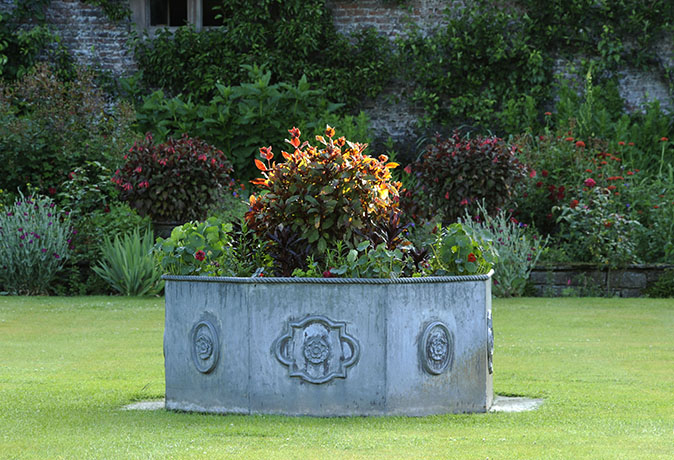
To date, there are gates of tulips, martagon lilies and lily of the valley. The Walled Garden the Inglewoods took over was full of vegetables and flowers being grown for Covent Garden.
Now, it’s a sheltered, scented space with broad herbaceous borders, springy lawns and comfortable gravel paths among the padded, rich-green foil of clipped yew hedge and architectural quartets and octets of Irish yew.

There are intense runs of colour: violet-blue Geranium magnificum with the crimson-and-white striped Rosa mundi and an entire border of soft-mauve Allium acuminatum punctuated by a pair of glossy, turquoise Vietnamese vases.
The Cross Border brims with lupins, morello cherry, Rosa mundi (Rosa gallica Versicolor), Geranium Magnificum, white-flowered honesty:

As well as a cool blue-and-yellow border, there are the ‘hot borders’, which increase in intensity as the summer progresses with the luminous-scarlet rose Evelyn Fison, bright-red Lychnis chalcedonica and towering stands of rich-yellow Verbascum densiflorum among the stars of the show.
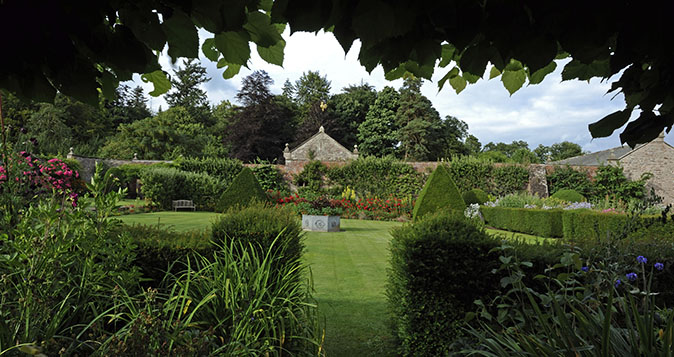
The high walls are dense with espaliered fruit trees: pear, apple, plum and quince. A pair of lime canopies set along the Middle Borders encourage the visitor to pause for a moment.
The canopies provide a lovely green-fringed shelter from which to take in the layered view of borders, magnificent topiary hedges and mature woodland or the rosy house beyond.
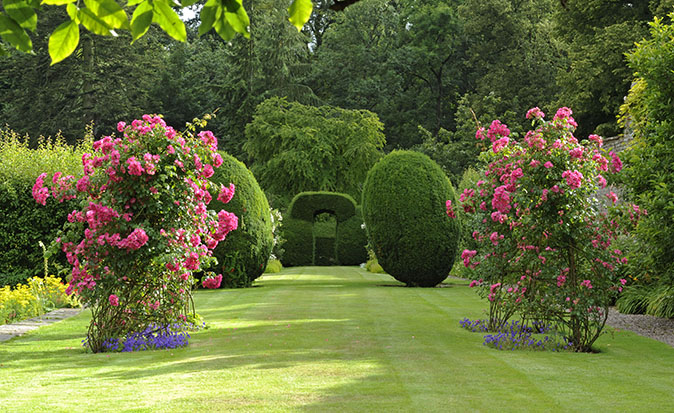
A particularly satisfying aspect of the garden at Hutton is the way it’s so deftly connected to the interior of the house.
The graded palettes and grid-like patterning of the Walled Garden are an uplifting echo of the brooding navy-blues and vibrant pinks and yellows of the original William Morris Pomegranate and other rare wallpapers within.
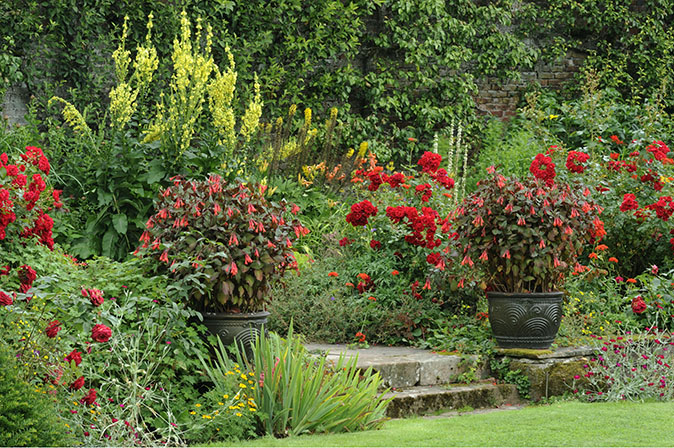
The Gazebo – a circular room at the end of the first floor Long Gallery – seems to be suspended directly over the Walled Garden’s central borders and the delicate biscuit tones and fine Rococo plasterwork of the Cupid Room are energised by the fresh greens of the Lower Garden that fill the enormous windows.
Here is the 'Hot Border': Rosa Evelyn Fison, daylillies, Verbascus densiflorum and Crocosmia Lucifer:
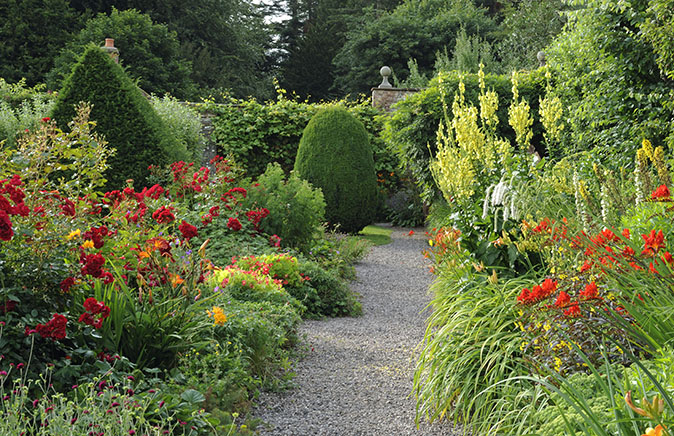
The garden at Hutton-in-the-Forest is big enough to explore, but intimate enough to feel welcoming. It’s respectful of the past, clearly loved and enjoyed in the present and will surely be carefully and imaginatively nurtured into the future.
Hutton-in-the-Forest, Penrith, Cumbria – more details via 01768 484449 or www.hutton-in-the-forest.co.uk
- - -
Apple tree underplanted with Paeonia officinalis in the Walled Garden:
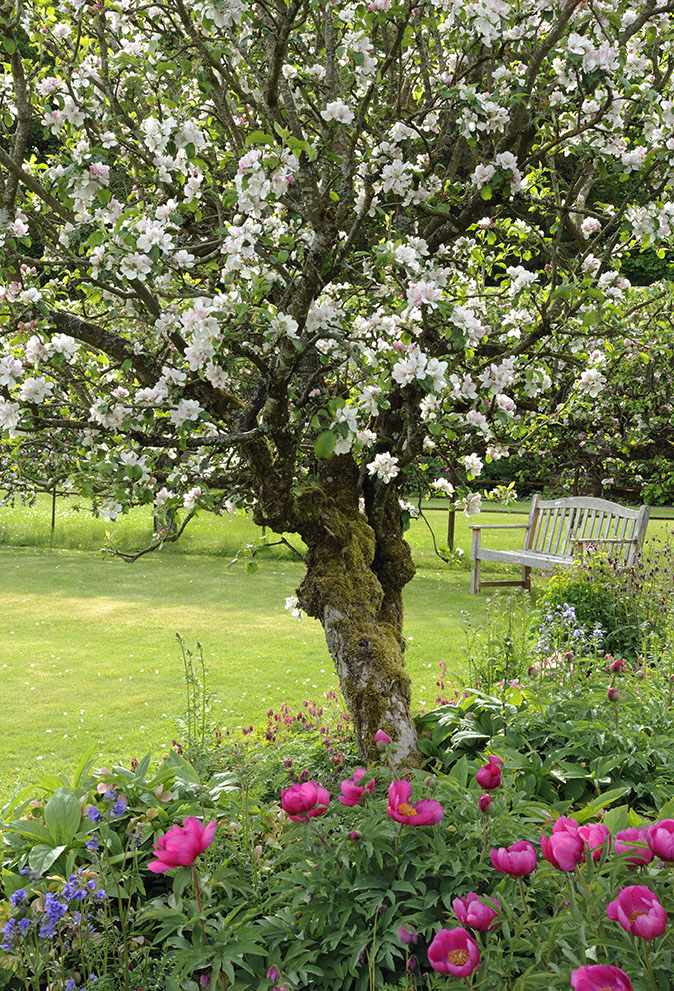
The Walled Garden: espalier apple trees, Nasturtium Milkmaid in the urn with a pool of Viola Jersey Gem at its base. Aquilegia McKana Hybrids and Lunaria annua against clipped yew:
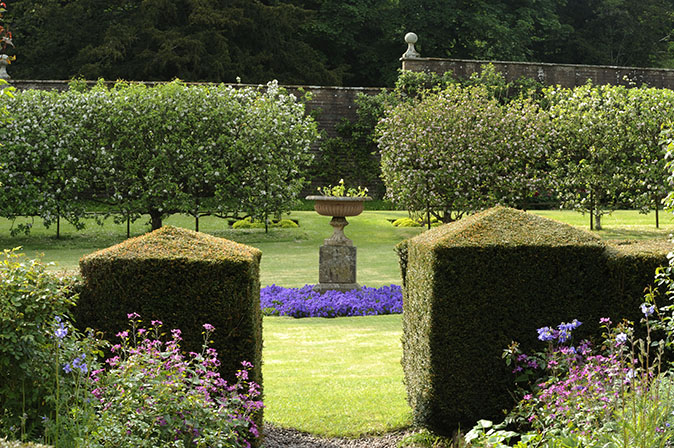
The Middle Border in spring. One of the lime canopies just coming into leaf, apple trees in full blossom on the lawn. Paeonia officinalis, Dicentra formosa and Lunaria annua in the borders:
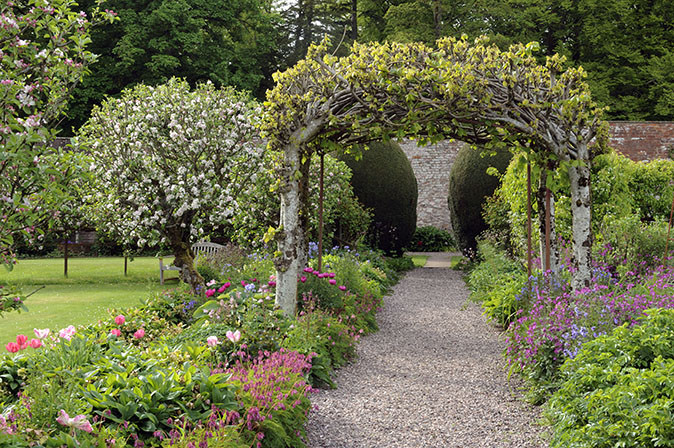
View to the Walled Garden via the iron martagon lily gate made by Scottish artist-blacksmith Adam Booth:
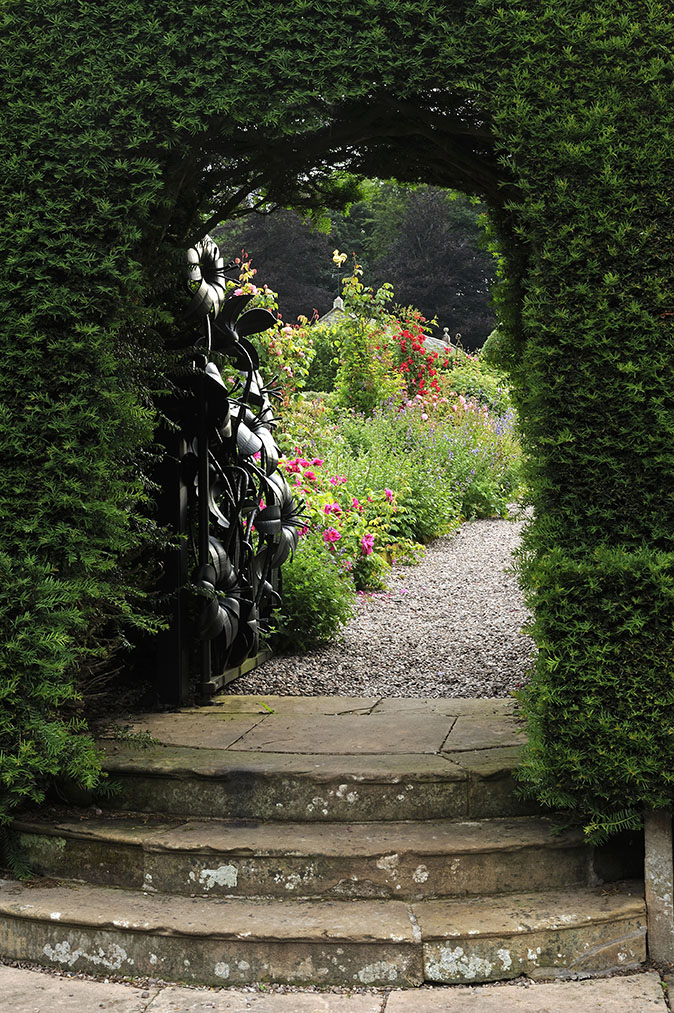
Lily of the valley gate, one of three Walled Garden gates commissioned to date from artist-blacksmith Adam Booth:
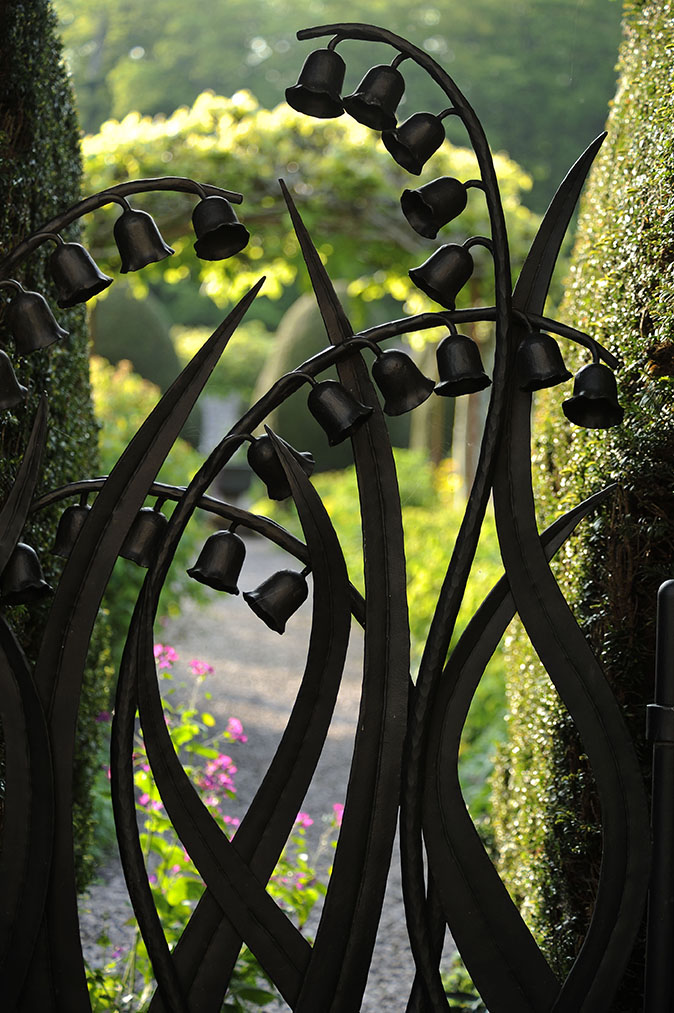
The Middle Border and the Walled Garden with structural octets and quartets of clipped yew and a pair of lime canopies that encourages the visitor to pause for a moment:
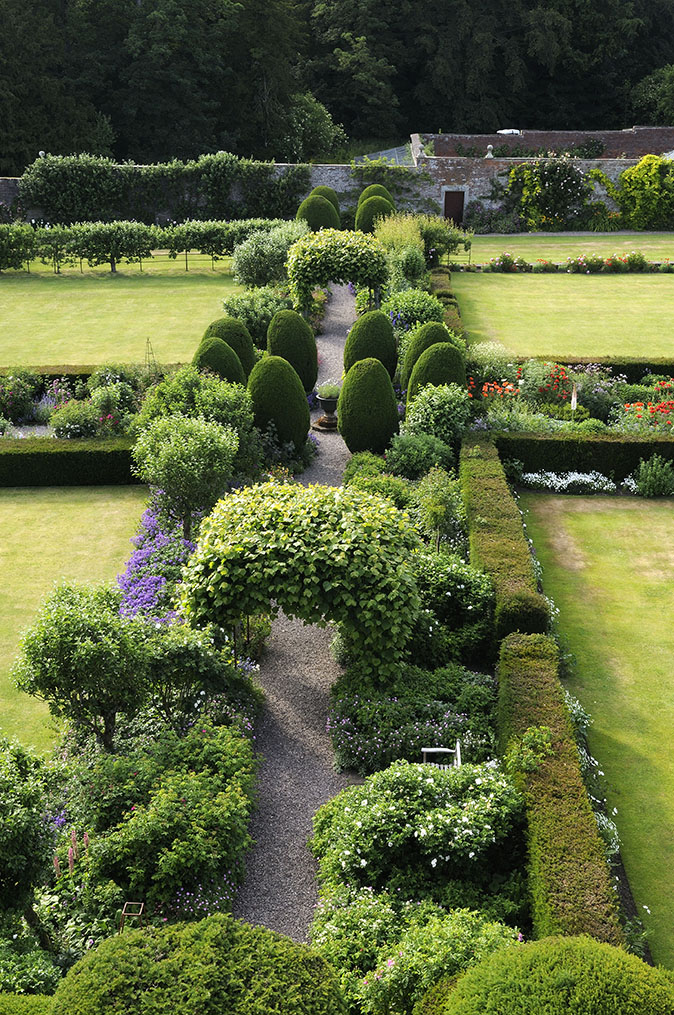
The fine topiary of the West Terrace. The terracotta urns are planted with Nasturtium Milkmaid:
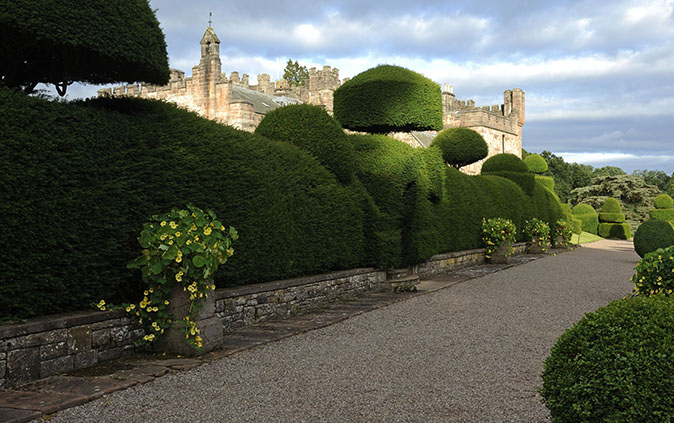
- - -
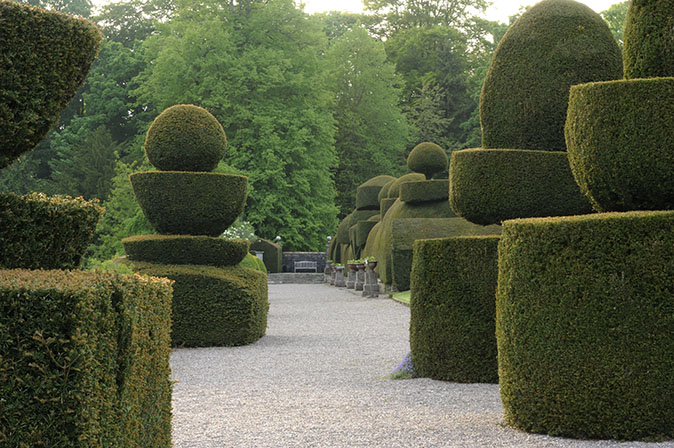
This fine yew topiary on the South Terrace was planted in the 19th century:
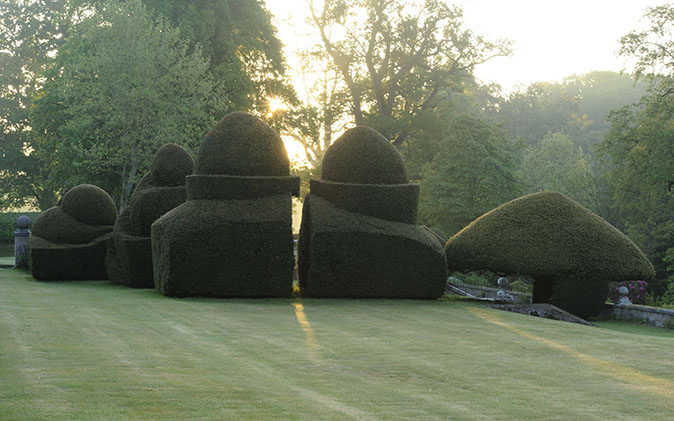
- - -
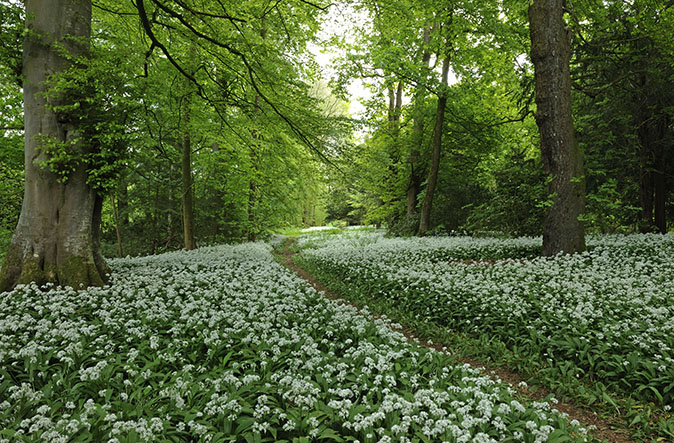
Country Life is unlike any other magazine: the only glossy weekly on the newsstand and the only magazine that has been guest-edited by His Majesty The King not once, but twice. It is a celebration of modern rural life and all its diverse joys and pleasures — that was first published in Queen Victoria's Diamond Jubilee year. Our eclectic mixture of witty and informative content — from the most up-to-date property news and commentary and a coveted glimpse inside some of the UK's best houses and gardens, to gardening, the arts and interior design, written by experts in their field — still cannot be found in print or online, anywhere else.
